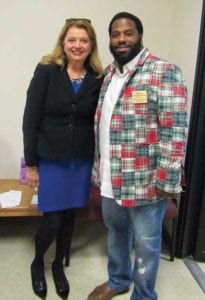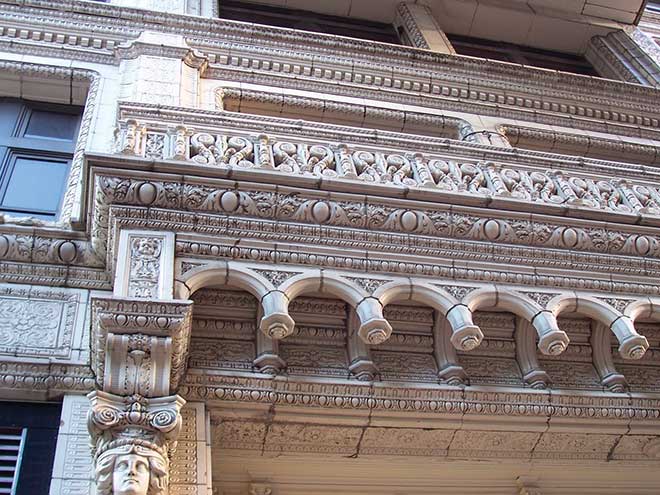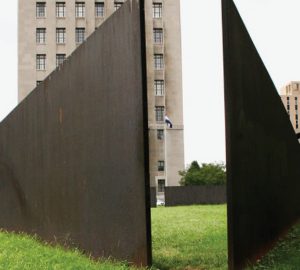 ferguson
ferguson
More families in North County will have access to St. Louis Crisis Nursery Center services, now that the Ferguson Outreach Center has opened in the Ferguson-Dellwood Community Resource Center. The nursery has been serving North County families for more than 25 years through its location on the Christian Hospital campus. But the nonprofit realized the need was greater. During the 2014 community upheaval that began in Ferguson after Michael Brown was shot and killed, the nursery canvassed the community every weekend, knocking on doors and giving out formula, food, diapers and any other essentials that parents needed. Community leaders and supporters joined Jan. 27 to celebrate the outreach center’s opening at 1433 Stein Road. “Together, we offer hope and support to families struggling with overwhelming parental stress, homelessness, major health issues, any crisis. We wrap our arms around them and walk with them on their journey,” says Crisis Nursery CEO DiAnne Mueller (pictured with Dellwood mayor). The new outreach center will provide families with crisis counseling, community referrals, home visits and parent education groups. When services are located in the community, officials say, neighbors become part of the solution. Crisis Nursery is renowned for an innovative program that provides short-term, safe havens for more than 7,200 children a year who might otherwise be at risk during stressful times of crisis for their families. The nursery is open 24 hours a day, 365 days a year at five sites, serving families throughout the St. Louis metro, including St. Charles and southern Illinois.
 olivette
olivette
Old Bonhomme Elementary students are partnering with their local heroes—Olivette police officers and firefighters—to create community artwork for the new Olivette City Center, scheduled to open in April. The project is a mosaic tree pieced together from clay tiles to be installed in the foyer of the new building. And not only did students have a hand in being a part of their town’s history, but Olivette residents were invited to participate, too. The Old Bonhomme Art Department held two studio days for community members to craft a piece of the tree, the final one Feb. 4. Lisa Roth, the school’s art teacher, has been planning this community art project for more than a year with the help of police chief Rick Knox and the City of Olivette. Each student at Old Bonhomme has made a clay piece to be included, with the help of the city’s government officials and first responders. These public servants visited art classes to help the kids create their clay creations for the tree, which symbolizes the community’s growth, strength and individualism. Impressive. Many schools—this one included—make construction paper compositions to be posted awhile on the bulletin board. But this is a permanent piece that today’s kids can revisit in the future to show their own children with pride.
chesterfield
Chesterfield is nothing if not sprawling. Some have called it, somewhat euphemistically, ‘dispersed geographically.’ And, bisected by an interstate, it’s not easy to get from here to there … on foot. Unlike many other municipalities that can tout their pedestrian-friendliness, Chesterfield just isn’t that walkable. But that will change considerably by May, when the new overpass taking Chesterfield Parkway East across I-64 is completed, widening the parkway from four to eight lanes. That opens things up for autos, but now there is reason for walkers, runners and cyclists to rejoice. They’ll no longer have to take their chances against traffic on a bridge that really was too narrow to accommodate everybody. A pedestrian bridge is part of the project and will run alongside the parkway bridge on the west side.
wildwood
Wildwood, an upstart community of sorts, has found itself a seasoned economic development manager in Julian Jacquin. Hired for the newly created position, Jacquin brings nine years of economic development experience to Wildwood, which was founded in 1995. His charge is to help the county’s youngest city continue to grow organically, to balance respect for the area’s natural beauty with creating more opportunities for residents and businesses. He previously served as a senior project manager with Economic Development Resources in St. Louis, where he worked with more than 30 municipal governments. Jacquin says his priorities include: learning the needs and desires of Wildwood residents and balancing them with the city’s many economic development opportunities; establishing a partnership with business owners to create a shared destiny for Wildwood; and identifying opportunities to fill Wildwood’s town center. While focusing on economic development, as his title suggests, Jacquin says he also recognizes that the city—the third-largest geographically in the state with space for residential development unlike anywhere else in the county—has a duty to protect its scenic hilly, wooded landscapes.
st. louis
The historic Railway Exchange Building downtown (pictured above) almost has been orphaned a number of times, but never lost its dignity. Now it is headed where so many of the StL’s finest examples of urban architecture have gone recently: nowhere, in a good way! No headache ball for this work of art from the ‘Chicago School.’ It will successfully avoid the 1984 fate of the Buder and International buildings and so many others before and since. Preservationists have said St. Louis has ‘great bones,’ and it is gratifying that so many 19th-century and early 20th-century structures from an era of industry and manufacturing are worthy of preservation. (They don’t make them like they used to, right?) A Florida developer bought the building, which takes up the full city block facing Olive, 6th, Locust and 7th streets, reportedly for about $20 million. Apparently plans are to reconfigure the 21-story, white terra cotta gem from the inside out into what so many others have done: ‘multiuse.’ Vacant since Macy’s vamoosed in 2013, the building’s future is somewhat sketchy—developers have been fairly mum about what happens next—but we’d venture to say there’ll be street-level retail and offices, with more offices and residential lofts on higher floors. There could be a hotel (and maybe a disco roller rink and a paintball place … nah, that’s just my wishful thinking!). But there’s plenty of room for myriad concepts. The building never shrank, of course, but its occupancy gradually did. The downtown Famous-Barr department store was its major tenant for decades, with most of the remainder taken up by the retailer’s parent company, May Department Stores. When Macy’s, the incredible shrinking company, bought out Famous, it occupied fewer floors. The behemoth, at 1.2 million square feet, was the tallest in the Lou when completed in 1914. An early lithograph touted the 5,000 double-hung windows, which occupants could open at one time … and with any luck, may again.








